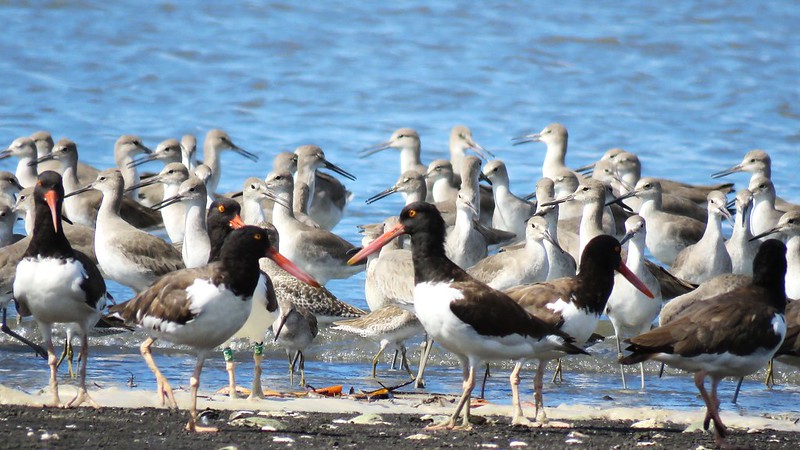Manomet Conservation Sciences is proud to announce the recipients of the 2025 Small Grants for Conservation of Neotropical Shorebirds. This program was created to support early-career conservationists and researchers in Latin America and the Caribbean who are committed to advancing shorebird conservation. The Small Grants seek to generate tangible benefits for Neotropical shorebird species and populations, with special emphasis on sites within the Western Hemisphere Shorebird Reserve Network (WHSRN) and those that could qualify for this designation. The program also aims to strengthen the technical capacity of young professionals starting their careers in conservation across Latin America and the Caribbean.
In this third edition, we received 56 proposals from 11 countries across Latin America and the Caribbean, a clear reflection of the growing energy, innovation, and commitment to shorebird conservation in the region. The final nine projects selected—after a rigorous review process—demonstrate outstanding quality, creativity, and diversity.
These projects will be implemented in the coming years to advance the science and conservation actions needed to better understand shorebird ecology, safeguard critical habitats, and mitigate the threats these species face throughout the Neotropical region.
We are excited about the impact these projects will have on shorebirds and their habitats, as well as on the capacities and skills of the young shorebird enthusiasts. We extend our gratitude to all applicants for their dedication and passion.
Below, we proudly introduce the 2025 grantees and their projects:
Joquín Calderón González
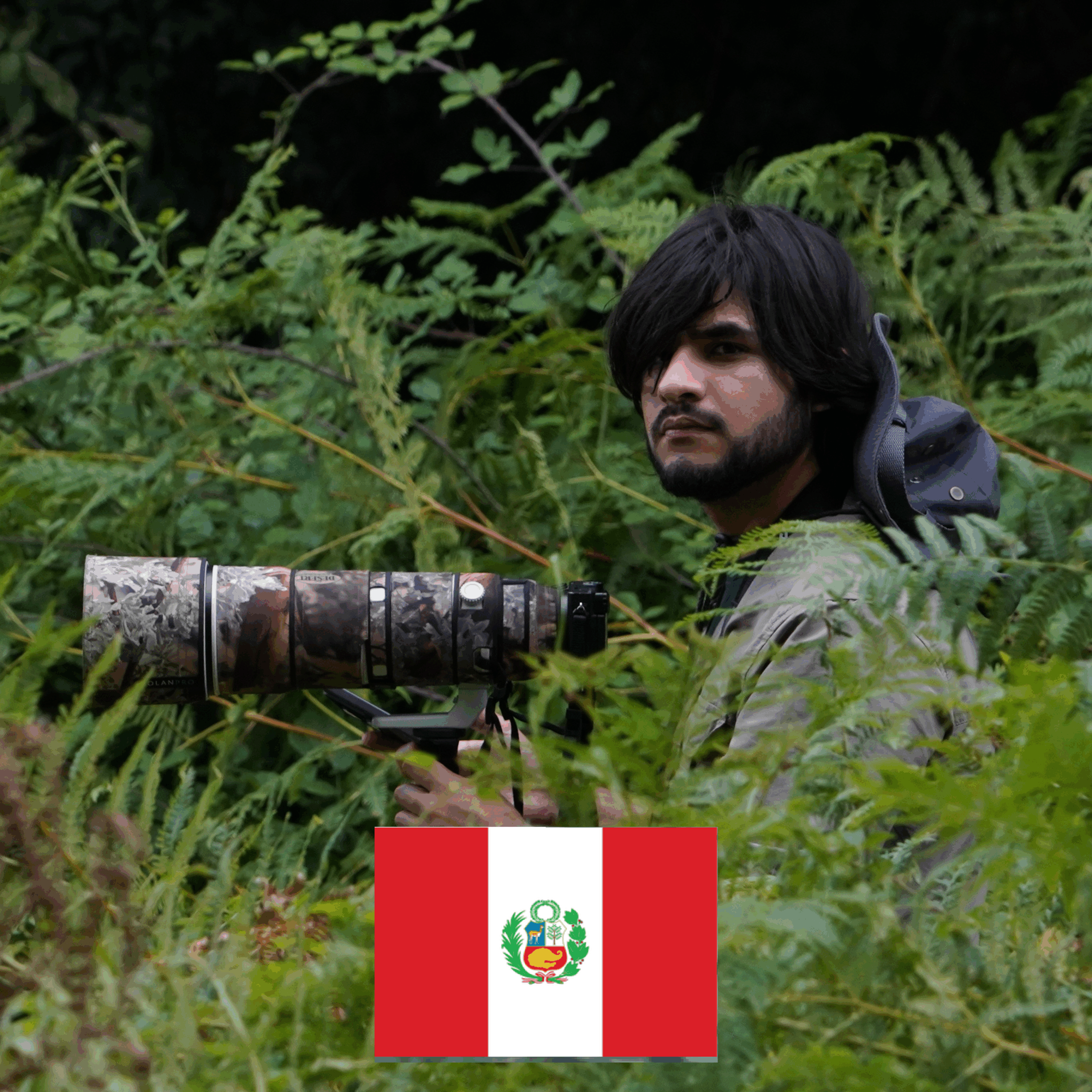
Coastal Wetlands Poza de la Arenilla, Peru
Joaquín is an eighth-cycle Marine Biology student at the Scientific University of the South. Since 2024, he has been a volunteer at the Center for Ornithology and Biodiversity (CORBIDI), where he has participated in exhibitions, fairs, and other events related to birdwatching and conservation. Through these experiences, he has gained knowledge in shorebird monitoring and identification.
His project “Trophic ecology of the Black Oystercatcher (Haematopus ater) in the Poza de La Arenilla coastal wetland: implications for its conservation”, seeks to generate knowledge about the diet of the Black Oystercatcher in the Poza de La Arenilla coastal wetland, an urban wetland that provides high food diversity for shorebirds, while raising awareness of the need for its conservation. The results will reinforce the importance of conserving urban coastal wetlands, highlighting their critical role in sustaining Neotropical shorebirds.
Víctor Hugo Sarabia Sánchez
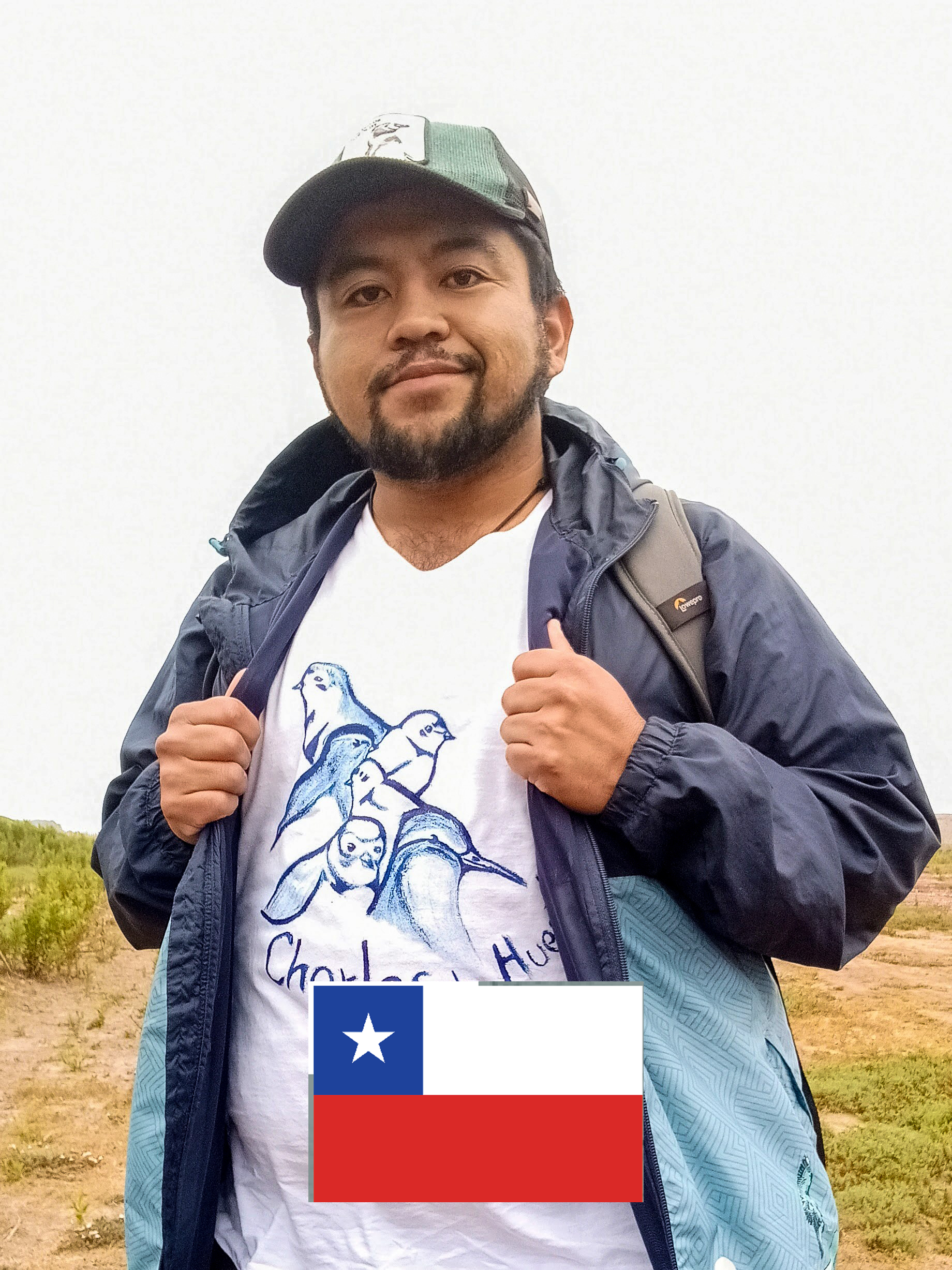
Salinas de Huentelauquén, Coquimbo Region, Chile.
Víctor is a psychologist trained at the Universidad de la Frontera, where he completed his undergraduate studies and later a Postgraduate Specialization in Community Psychology.
His early work experiences were connected to rural communities in the Choapa province, where he first became involved with the Las Salinas de Huentelauquén Wetland. During this period, he worked alongside the community organization ArteCanela, promoting initiatives to highlight local heritage through art.
Over the past decade, he has built his career in the field of public policy, particularly on issues related to childhood, while maintaining a strong connection to biodiversity conservation and the natural spaces of Choapa province. Since 2020, he has been a member of the Chilean Bird and Wildlife Observers Network (ROC) and the Yastay Foundation, where he has contributed to research, data collection, and the integration of his expertise in community psychology and territorial engagement with Choapa Province.
His project, titled “Shorebirds and domestic livestock in seasonal ponds of the WHSRN Site Las Salinas de Huentelauquén”, focuses on monitoring three species of Neotropical shorebirds within the context of livestock activity in the seasonal ponds of the WHSRN Site.
Leonice da Rosa Homem
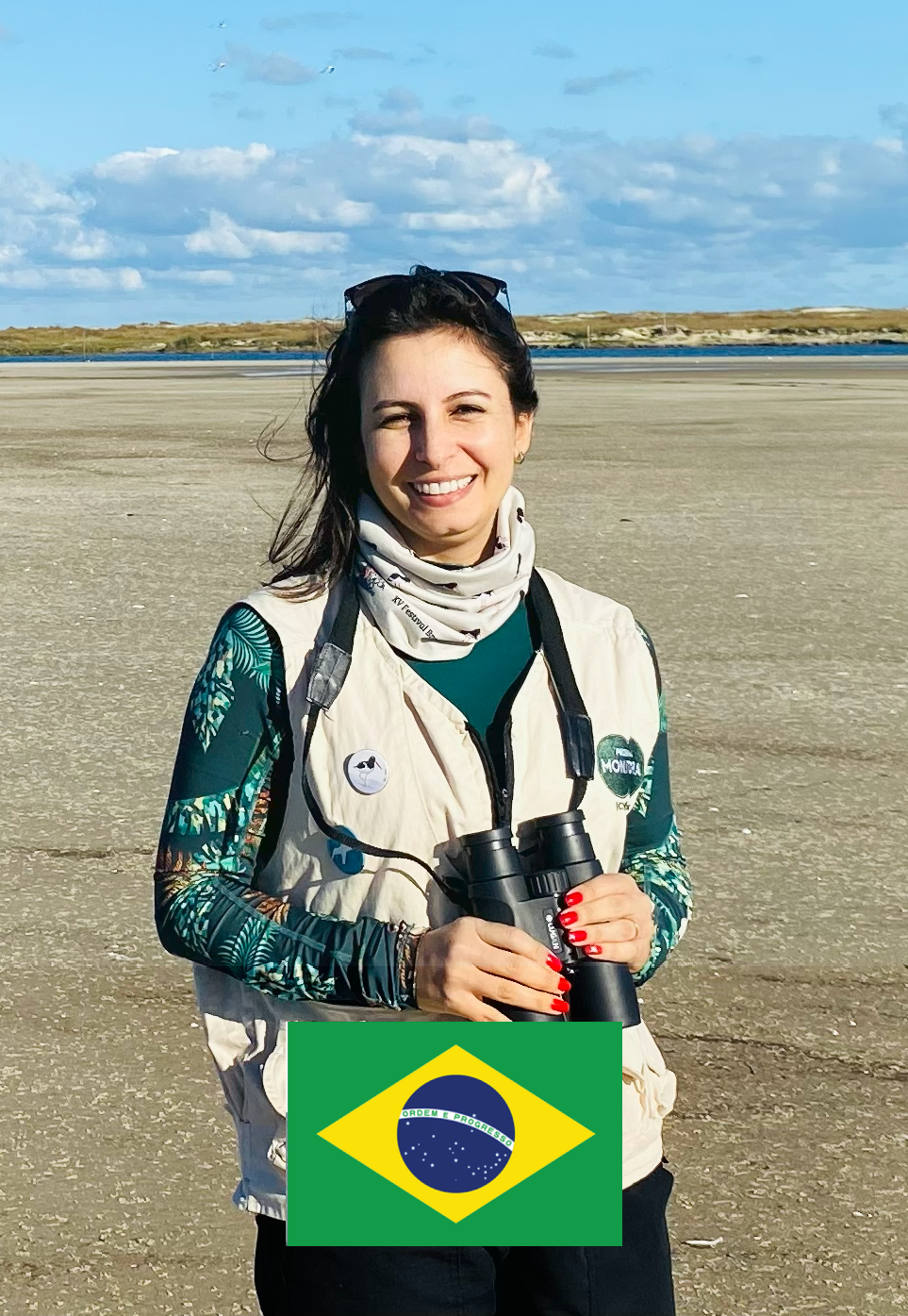
Lagoa do Peixe National Park and Itapeva State Park, Brazil
Leonice is a biologist, master’s student at the State University of Rio Grande do Sul (UERGS), and researcher with experience in environmental management, wildlife monitoring, and science education. Her work in conservation units and traditional communities has deepened her commitment to biodiversity conservation.
Her work at the NGO SAVE Brasil, as well as at the Piru-piru Project (Uergs/GEMARS), aims to promote the appreciation of shorebirds through environmental education actions, strengthening conservation strategies and community engagement, consolidating her trajectory as a young researcher dedicated to the protection of nature.
Her project, entitled “Monitoring of American Oystercatcher (Haematopus palliatus) in two conservation units in southern Brazil: Lagoa do Peixe National Park and Itapeva State Park,” focuses on investigating the potential impact of exotic species on the reproduction of American Oystercatcher in two conservation units in southern Brazil.
María de los Ángeles Loredo
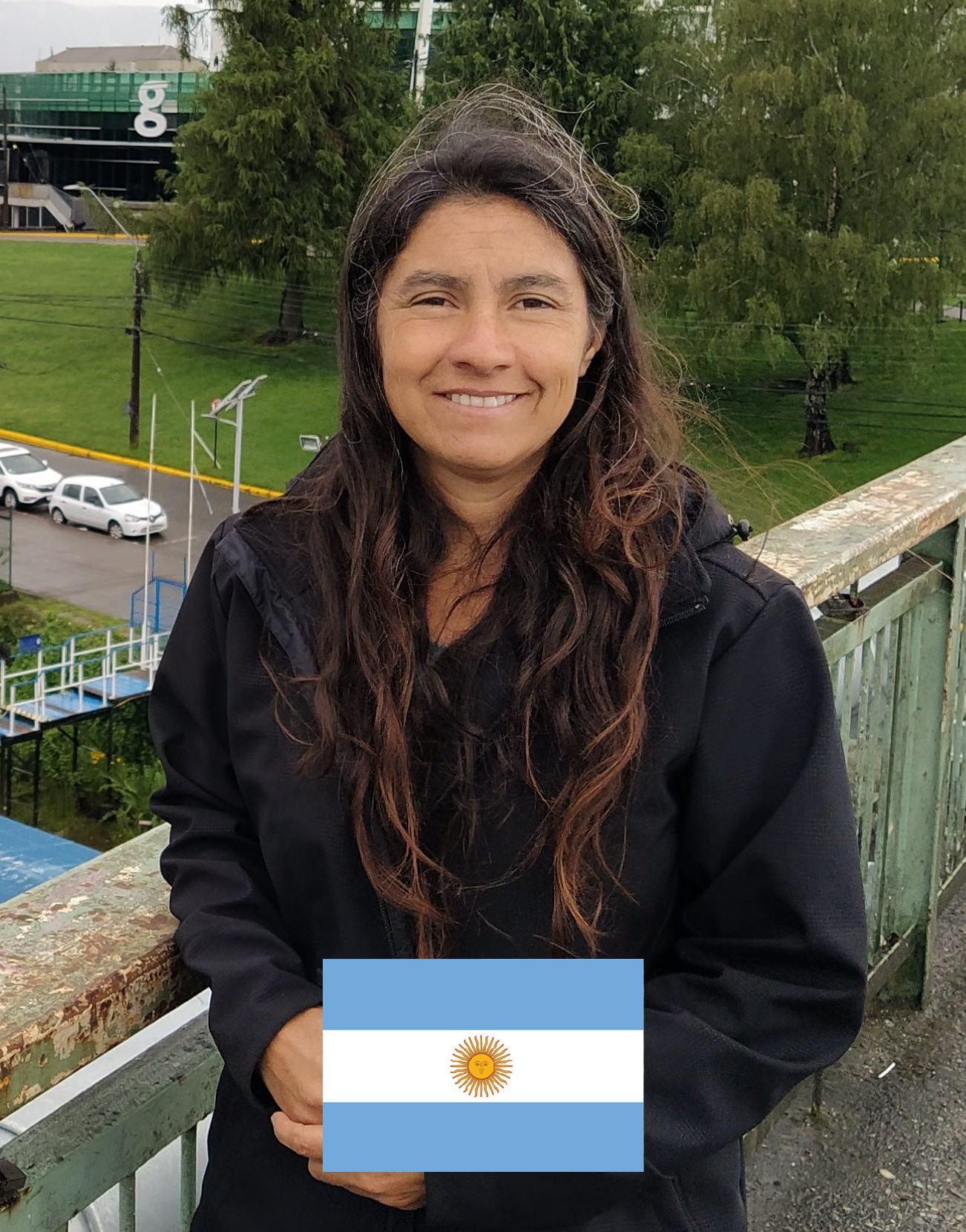
Faro Querandí Natural Reserve, Argentina
María de los Ángeles Loredo is a Biological Sciences student at the National University of Mar del Plata and has been actively engaged with the Faro Querandí Reserve from its early days, serving as both a park ranger and guide.
Her experience with shorebirds includes conducting grassland plovers censuses as part of the Grassland Alliance programs and participating in capture campaigns in the provinces of Santa Fe and Córdoba during 2023 and 2025. Additionally, she participated in the monitoring of Red Knots at the Faro Querandí Reserve in 2023 as part of a research affiliation with the Faculty of Exact and Natural Sciences of the University. Ángeles seeks to consolidate her experience beyond fieldwork and actively contribute to the conservation of shorebirds in her community.
Her project, titled “Strengthening the conservation of the durnfordi American Oytercatcher (Haematopus palliatus durnfordi) through participatory actions at the Faro Querandí Natural Reserve, Argentina”, focuses on enhancing the conservation of the durnfordi American Oytercatcher and promoting effective, participatory management in the Natural Reserve and surrounding areas by engaging local authorities and the community.
Nurialby Viloria Canelón
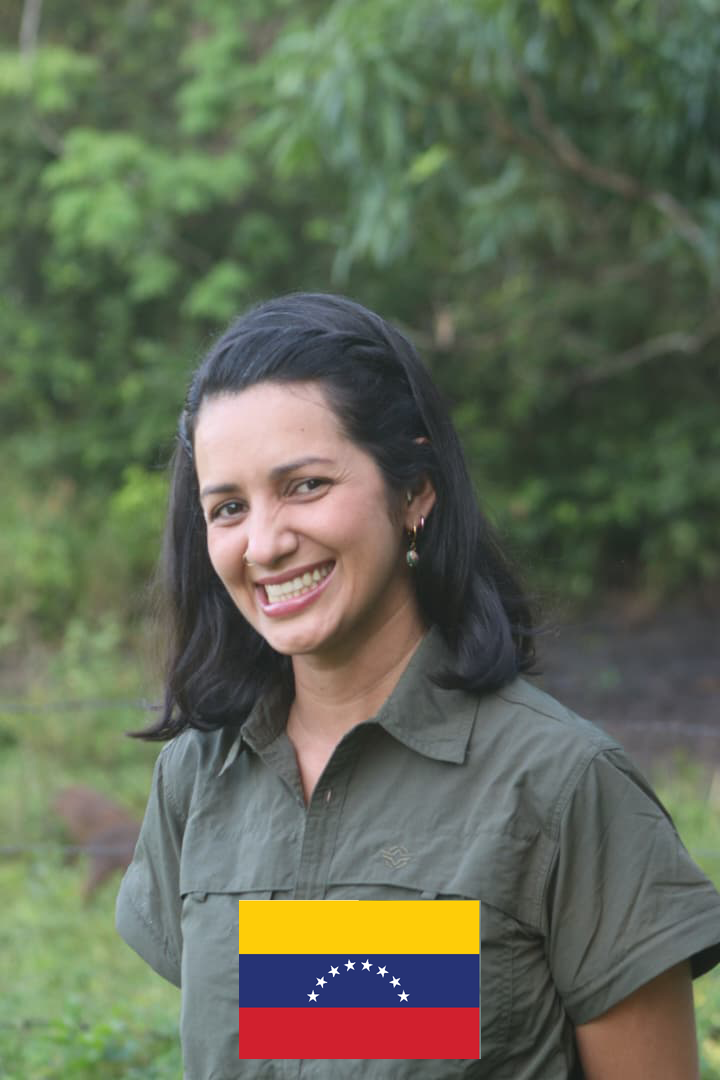
Masaguaral Ranch, Guárico State, Venezuela
Nurialby is a biologist with experience in bird handling, nest monitoring, and behavior recording. She is certified in bird banding by NABC (2022). In Venezuela, she has coordinated the research project on the Green-rumped Parrotlet (Forpus passerinus) and strengthened her skills by participating in conservation projects that include monitoring migratory birds at Paso de Portachuelo and surveying the Buff-breasted Sandpiper (Calidris subruficollis). A member of the Akehe Network through the Mi Bosque Local project and a volunteer with the eBird Venezuela team, Nurialby combines enthusiasm, science, and methodology, as reflected in her contributions to scientific publications.
Her project “Monitoring of American Oystercatcher (Haematopus palliatus) in two conservation units in Southern Brazil: Lagoa do Peixe National Park and Itapeva State Park”, aims to determine how the degree of intervention in plain savannas affects the reproductive success of Hesperoburhinus bistriatus, a shorebird with little-studied autecology. With a research and social action approach, this project seeks to generate key information for conservation strategies and promote a sustainable relationship between biodiversity and human activities in the Venezuelan plains.
Emil Ludwin Rivas Mogollón
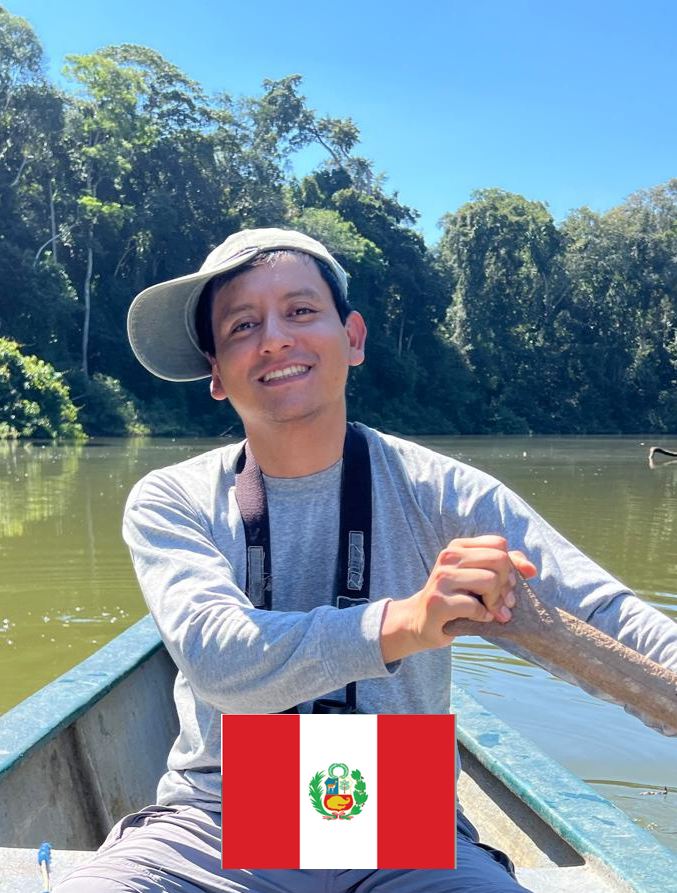
Central coast, Peru
Emil is a biologist graduated from the National University of Piura and is currently pursuing a master’s degree in Biodiversity and Ecosystem Management at the National University of San Marcos. He is a member of the Research Unit in Ecology and Conservation of Seabirds at the
Scientific University of the South and part of the communications team of eBird Peru – CORBIDI. His professional career has focused on bird assessments in research projects, environmental consulting, and environmental management, although his true passion lies in conservation. Through his academic training, he has acquired tools to promote biodiversity protection under sustainable approaches adapted to different regional contexts.
Emil seeks to integrate scientific knowledge with practical strategies for ecosystem management, aspiring to dedicate himself fully to conservation and to strengthening biodiversity protection in his country.
His project, entitled “Spatial distribution of the American Oystercatcher (Haematopus palliatus) and conservation status of foraging and nesting areas in a region impacted by an oil spill on the central coast of Peru”, aims to contribute to the conservation of the American Oystercatcher (Haematopus palliatus) and the protection of its habitat on Peru’s central coast, generating scientific evidence to guide management and restoration strategies in areas affected by oil spills.
Juan Andres Milicich

Madre de Dios, Peru
Juan Andrés is a biologist with a strong focus on bird ecology. Since the beginning of his professional career, he has worked at the Ornithology Laboratory of the National University of Río Cuarto (UNRC), specializing in bird banding and ecological fieldwork. In addition, he serves as Argentina’s coordinator for the GLOBE group in the long-term monitoring of Southern Lapwing (Vanellus chilensis), leading fieldwork across the country from Salta to Tierra del Fuego. His interests include spatial ecology, the anthropogenic impacts on wildlife distribution, and applied conservation.
His project entitled “Satellite tagging and monitoring of Vanellus chilensis populations as an indicator of deforestation in the northwest of their distribution in Madre de Dios, southeastern Peru” seeks to determine the distribution, density, and movement patterns of the recently established population of Southern Lapwing in Madre de Dios, Peru, and to assess its ecological impact on native shorebirds.
Fernando Faria
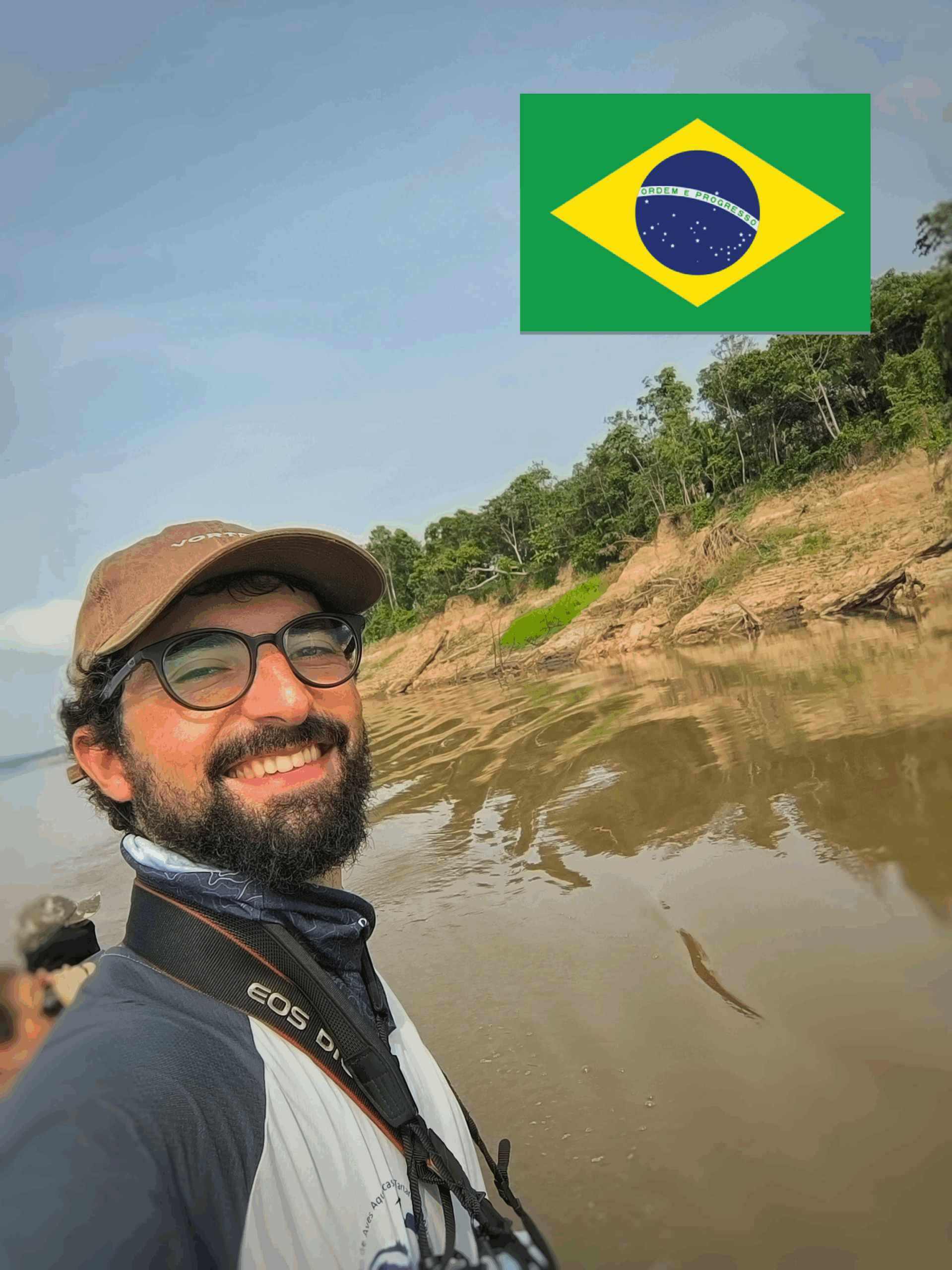
Lagoa do Peixe National Park and Estuário da Laguna dos Patos – Ilha da Torotama, Brazil
Fernando Faria is a post-doctoral researcher at the Federal University of Rio Grande-FURG. He pursued a degree in Biology, initially studying herons, and later focused on shorebirds during his master’s research on Torotama Island, where he encountered the South American Painted-Snipe (Nycticryphes semicollaris) for the first time. This experience inspired him to continue his work to the study and conservation of shorebirds, with special attention to understudied Neotropical species.
During his PhD, Fernando expanded his focus to shorebird breeding and movement ecology and developed expertise in locating and capturing the South American Painted-Snipe. He is now working to increase knowledge and conservation efforts to ensure the protection of this elusive species at two key sites critical for shorebird conservation in southern Brazil.
His project titled “Evaluation of breeding biology and conservation status of South American Painted-Snipe (Nycticryphes semicollaris) in southern Brazil“, aims to elucidate key aspects of its reproductive ecology and conservation threats in two breeding sites in Brazil.
Hiram Rafael Moreno Higareda
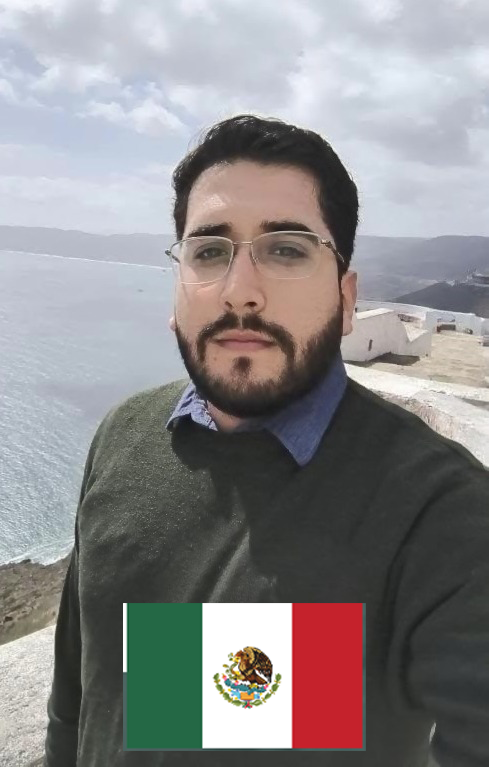
Bahía de Todos Santos, Mexico
Hiram Rafael Moreno Higareda is a biologist specializing in the conservation and population genetics of coastal bird species inhabiting sensitive wetlands. He holds a Master’s degree in Management of Arid Zone Ecosystems from Universidad Autónoma de Baja California (UABC) and is currently pursuing a Ph.D. in Life Sciences with a focus on Biological Conservation at CICESE, expecting to graduate in December 2025.
He has led multiple field studies, contributed to scientific publications, and participated in international conferences, collaborating with organizations including the San Diego Natural History Museum (SDNHM) and the California Department of Fish and Wildlife (CDFW).
His leadership roles include serving as General Coordinator of the Binational Coastal Lagoons Project and as a board member of the Western Field Ornithologists (WFO). He was also awarded the Baja California State Youth Award for Environmental Protection in 2021.
His project, “Monitoring the impact of vehicles on shorebird habitats with solar technology,” aims to monitor and mitigate the impact of vehicular traffic on key habitats of Neotropical shorebirds through the installation of autonomous solar-powered surveillance cameras. By deploying high-resolution cameras with real-time transmission, the frequency, intensity, and spatial distribution of vehicular activity on the beach will be systematically documented. The information collected will also support the justification for the site’s inclusion in the Western Hemisphere Shorebird Reserve Network (WHSRN) or strengthen its current designation.
This program is made possible by the generous support of the March Conservation Fund and other donors who share our passion for protecting shorebirds and their habitats.
Learn more about the Small Grants program here.


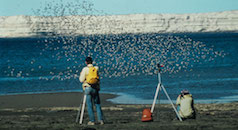
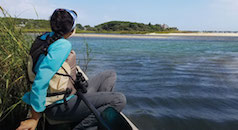
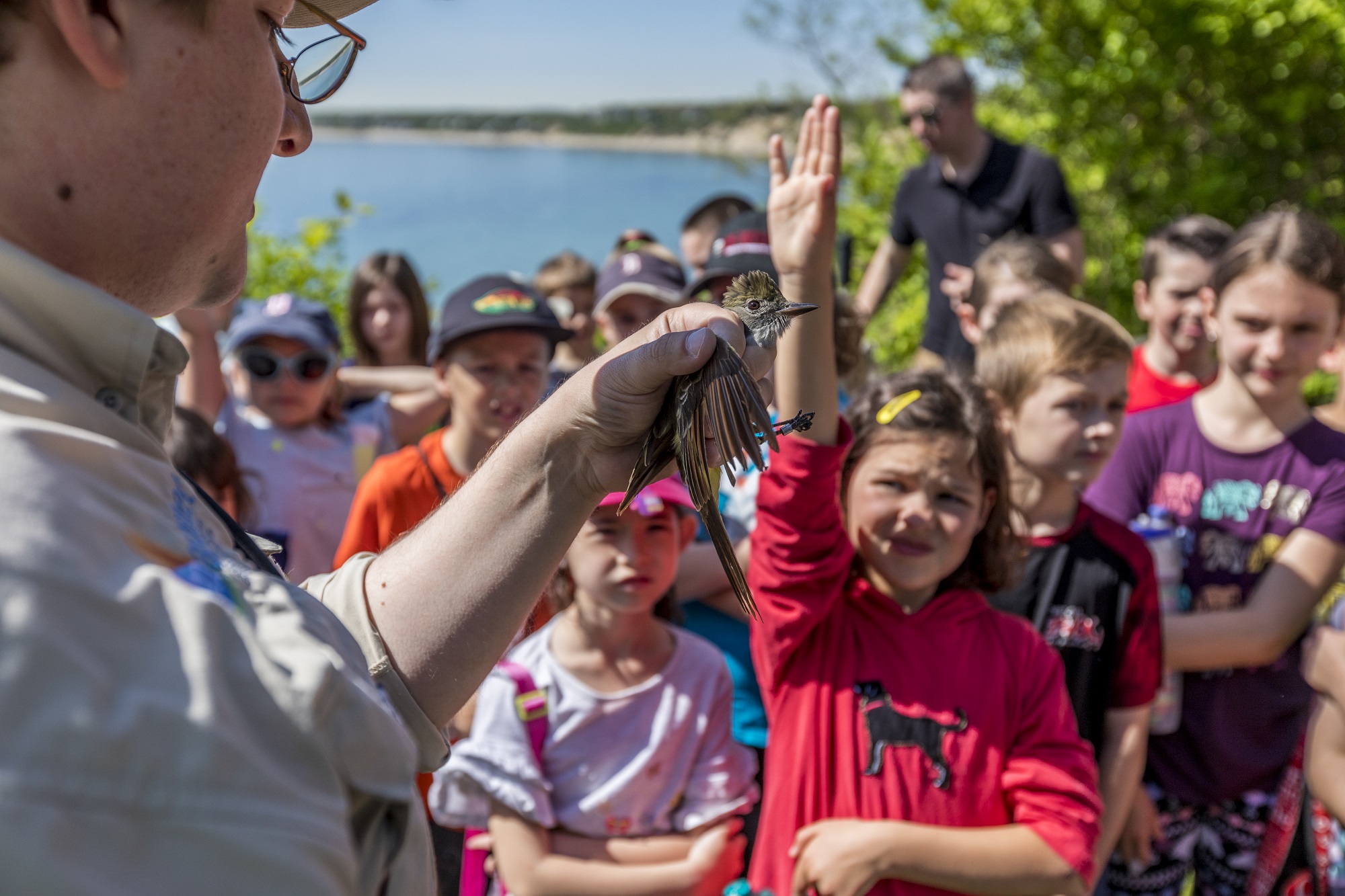
 Back to all
Back to all